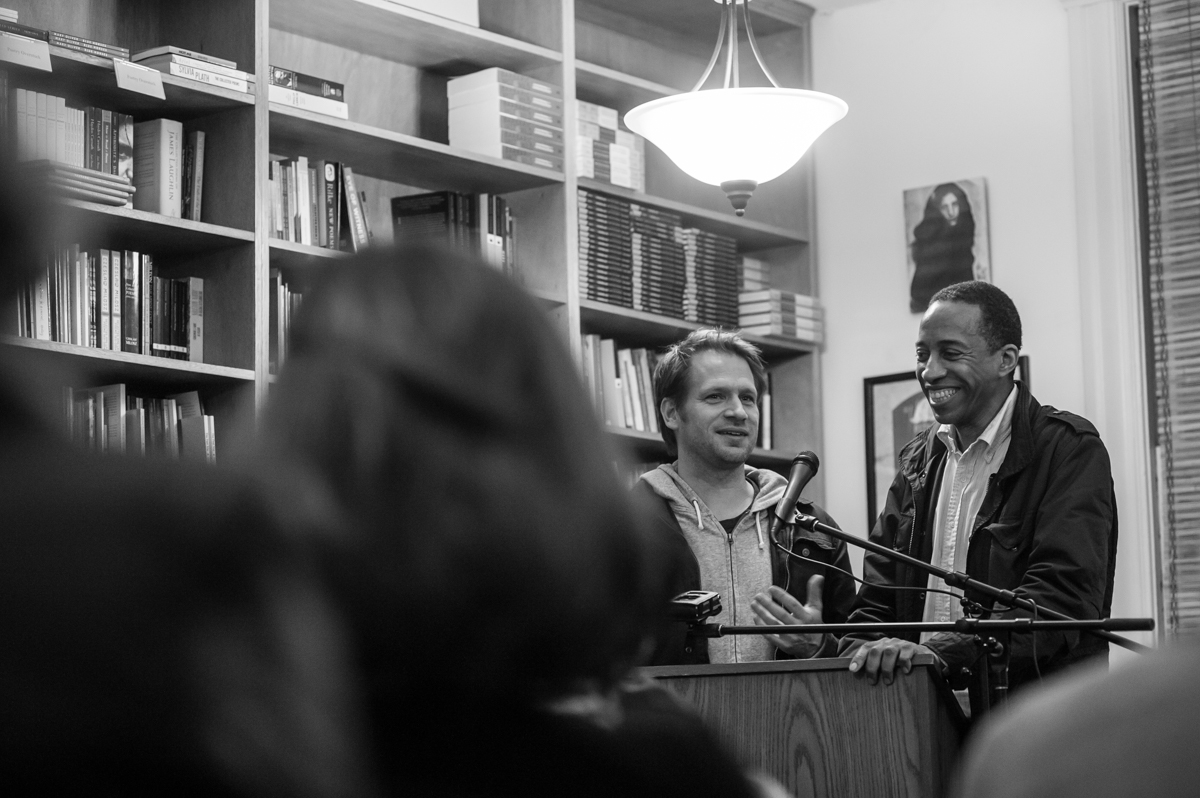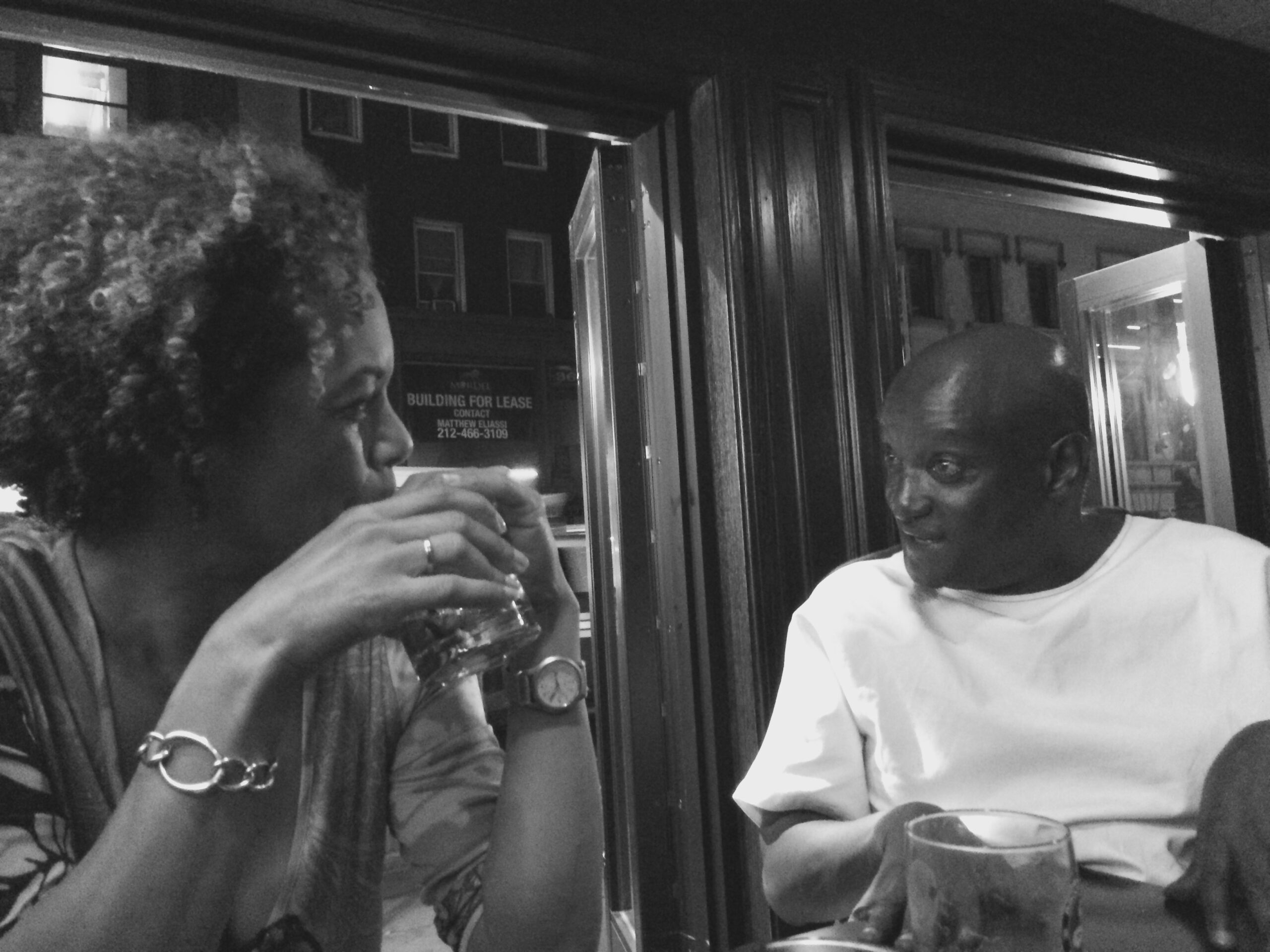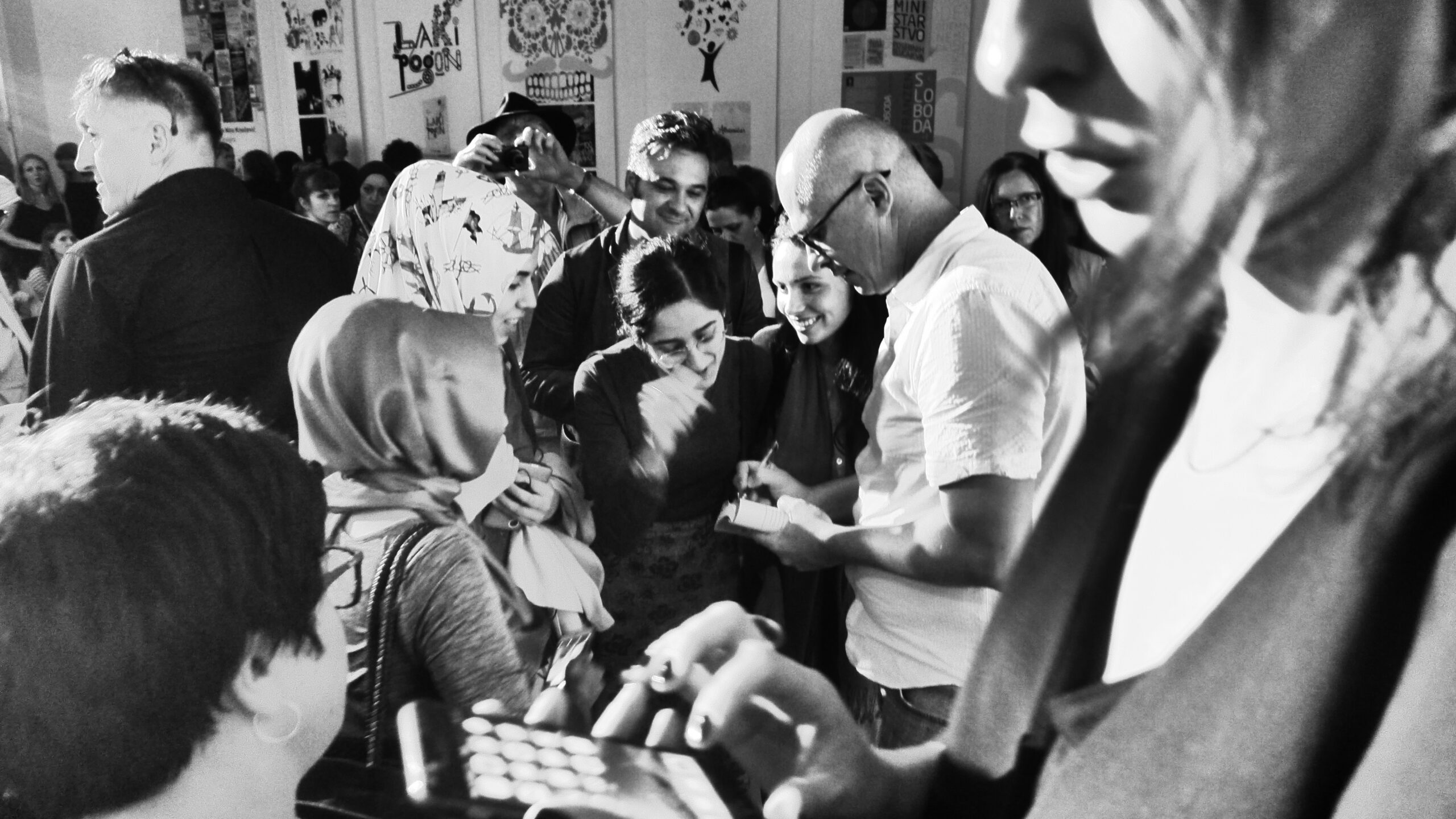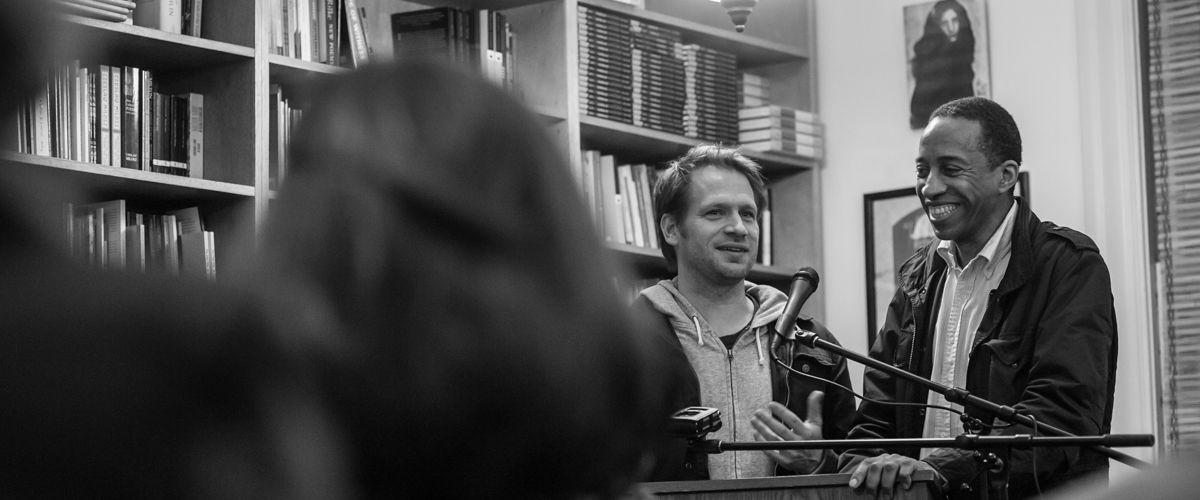I’m reading a book about New York in the late 1970s and it begins with a perennial observation that you can live many lifetimes in the city due to the unsentimental way it demolishes the past. I have a spooky feeling, peering over the shoulder of the writer, Paul Goldberger, forty-five years later. Most of the thrilling new items he describes – buses, which are all painted white, phone booths one cannot molest—are now in 2023 things in the past. Some of it reads like a prophecy: about Frank Lloyd Wright’s Mercedes Benz showroom at 430 Park Ave. Goldberger asks: “why Wright did this is a mystery… the idea of having sleek European cars appear to the purchaser to be gliding toward him off a curving ramp is an appealing one, but it doesn’t stand a chance of working in such a low cramped space.” And now that that show room is gone.
Working as an editor, especially within literary journals, can sometimes feel like a similar experience in hyperactive obsolescence. Not that writers’ manuscripts are gliding toward us in a low cramped space—but rather every week brings a new foreclosure. This month it’s The White Review and The Gettysburg Review. Next month it will be others. This is the way of literary magazine publishing. For every Virginia Quarterly Review or Paris Review, there are dozens if not hundreds of other small journals that open with fanfare, continue for a few issues and then close quietly in the night before the chill has gone off the wine for their launch parties. I’ve lived in New York City almost thirty years and my memory is cluttered with issue parties for little magazines like Open City or Astra, or Black Clock, beautiful journals which are no longer in circulation.
It can make you feel a bit gloomy, unless you accept that like New York City itself, literary magazines are by nature—most of them, not all—meant to be ephemeral. If they were part of a biosphere, little magazines wouldn’t be the tortoises swimming along well into their hundredth year, they would be the Great Danes of our planet—lovely, clumsy, a little slobbery and gone too soon. And of course, even though we know, otherwise, their days are numbered, we grow attached to them.
It can make you feel a bit gloomy, unless you accept that like New York City itself, literary magazines are by nature—most of them, not all—meant to be ephemeral.All of this is on my mind because Freeman’s, the literary annual I started in 2014, is also coming to a close this fall with its tenth issue, which is themed to conclusions. Yes, there was a time when I believed it would last for 70 years, and I fathomed going over proofs at age 114 with a looking glass and a pipe and stories of being at Ocean Vuong’s first public reading. I imagined having an office. I dreamed up the ways that it could become permanent. None of them were feasible. (Incidentally, these are reasonable things, by the way—and magazines which are striving toward semi-permanence, which employ people, like Gettysburg Review, absolutely deserve them, especially when people’s livelihood depend upon it)
That last parenthetical might sound like a bum-covering caveat, but these issues are important. I edited a literary magazine in the past, Granta, a magazine you might have thought had a license to burn money, since it was owned by one of the wealthiest women in Europe. It didn’t. And the unbuilding of the team I worked with was one of the most painful experiences of my professional life. What is one person’s choice is another person’s livelihood, and this is one of the challenges of working in a form that requires money, since virtually all literary magazines lose it, some of them quite a lot of it. Benefactors, institutional or individual, tend to have a different idea about money from the people who work for them.
 John Freemand with with Garnette Cadogan at City Lights.
John Freemand with with Garnette Cadogan at City Lights.
When I started Freeman’s one of the things I wanted to set in place was a support structure free of these hang-ups. It was a pipe dream, but I felt like it was possible in a world in which so many great things happen through mutual aid, not patronage. I wanted to pay writers first, everyone else who worked on it, and then see if it could make money. This meant, in essence, finding a book publisher who was willing to see if their existing system could take on some of the production tasks of the magazine: luckily, Morgan Entrekin at Grove, which has remained independent minded for almost eighty years, was willing to do this.
As a result, for the last ten years Freeman’s has benefited from some of the best young minds in publishing who were, essentially, moonlighting on their day jobs. Before his authors won Pulitzers (Viet Thanh Nguyen) and Booker Prizes (Douglas Stuart, Bernadine Evaristo), Peter Blackstock was its editorial assistant; followed by Alison Malecha and Dhyana Taylor and Emily Burns. For almost the whole run I had a managing editor, Julia Berner-Tobin, who made time out of her time to shepherd it along. If you’ve ever met a managing editor, the most minute-pinched people in all of publishing, you will appreciate what a lucky break I’d received. Freeman’s also had great copyeditors, production designers, and publicists. For a few year it’s had a home on this website thanks to Emily Firetog and Jonny Diamond, which brings it a distribution far greater than any post office can provide.
I knew this set-up had a time-limit. It was not, make money or else, it was rather: go for it, and let’s make sure not to overtax everyone involved. So I knew I’d have to treat every issue of Freeman’s like it might be the last. This was fine given my goals, which seem a little utopian when I set them down. I wanted to create a literary magazine that was a beautiful object, and whose pieces felt as warm and funny and sad, and intense as life itself. I wanted it to feel spoken to you. I wanted it to feel like the best dinner party you’ve ever been to, not because people are performing or dominating the table, but because one story built off another off another, and that in the exchange, something greater than the singular, came together, like a kind of music.
Storytelling and enchantment have come under criticism recently, perhaps because of the ways they are sold to us in a world in which our attention is a commodity. I never feel like this when I’m listening to a very good storyteller, or when a writer has plunged me into a world that they have created. It is astounding that the interior sonics of voice can change our minds. It can add new neural networks, alter blood-flow, it can literally change what we are made of, or what we care about.
 Aminatta Forna and Binyawanga Wainana telling stories.
Aminatta Forna and Binyawanga Wainana telling stories.
Little magazines have a history of utopian thinking and short life spans: I knew that if Freeman’s were to get beyond it’s third issue, it was going to need help. Freeman’s didn’t really have a promotional budget: so the only way to get it out there was to make it a place. Not just a paper bound book, or the corner of a website, nice as both are. I’ve always felt like events can do that, by creating a culture around a publication, and by occurring in spaces that already have acoustical mojo of their own: like independent bookstores. So for each issue Freeman’s had a series of events: more than 500 of them in all over the last decade, from Talking Leaves in Buffalo to City Lights in San Francisco, to Shakespeare & Co in Paris. I would say ninety percent of them at indy bookstores. There’s one this Friday at the Vancouver Writers Festival with Omar El Akkad and Tania James, this annual fall literary gathering has hosted no fewer than six launches.
This volume of events is glorious and wildly unsustainable, and yet I wouldn’t trade it for anything. To listen to and watch writers exchange ideas and think, even in the sometimes cynically tilted era of the book tour, the tidied model of the festival, is thrilling, especially when it’s people who aren’t often put together on stages. Literature is too easily slotted when we talk about it publicly. Sometimes it doesn’t have to involve physical travel either. I will never forget hearing Mieko Kawakami, Daniel Mendelsohn and Valzhyna Mort discuss the ways we talk about love in an event hosted online by the Vancouver Writers’ Festival. Or to hear David Searcy talk about drag racing in Corsicana, Texas.
I love events because I went to many of them in my twenties and thirties. When I moved to New York City in the mid-1990s I didn’t know anybody, I was often lonely. A little bit less so in libraries and bookstores or sitting in an audience with the lights turned low. The first year I arrived I went to three or four a week. I can’t believe some of the people I got to see read and speak aloud: Toni Morrison, Saul Bellow, Nadine Gordimer, Adrienne Rich, David Foster Wallace, Gloria Naylor, Wanda Coleman. W.G. Sebald. Kay Ryan. Dagoberto Gilb. Svetlana Alexievich. The list is my library.
Of course, as Jane Jacobs has argued, urban planning and greed and accidents make a city; but it’s people, too, which means their stories. The space those tales open up. The New York City I moved to was made possible by the social space of defunct magazines. I lived in the village in areas kept sane and informed by Christopher Street, which ceased publication in 1995, but whose writers, those who had survived, remembered and paid testimony in ways that lasted. Andrew Holleran’s Ground Zero, his essays from Christopher Street about living and dying in New York during the days when there were successful treatments for HIV and AIDS, returned to relevance during the terrifying opening days of the COVID-19 pandemic.
As a model for a little magazine, it was hard to find a better one. A publication which made itself feel needed during a time when stories were important. (And if you want to revisit that time, check out co-editor Michael Dennehy’s book, On Christopher Street, published in March this year). So many crises—and explosions—have had their versions: journals, small newspapers, chapbooks. Fire!—the magazine which ran for just one issue during the Harlem Renaissance, fueled by the work of Gwendolyn Bennett and Wallace Thurman and Zora Neale Hurston’s. Robert Bly’s great window to the world, The Fifties, connected anti-war activists in America to those around the world, from Tomas Transtömer to himself.
One of the great powers of a little journal is that, even when it is geographically pinned to a place, it opens up an alternate imaginary community to the ones of a nation, or at least of the nation as it is defining itself currently. In her great book, Bad Mexicans, Kelly Lytle Hernandez describes the ever evolving role of Regeneración, the newspapers which began calling out of Porfirio Diaz in the build-up to the Mexican Revolution. Doing so landed its editors, Ricardo Flores Magón and his brothers, in jail, so in the early 1900s they crossed the border into the U.S. and continued publishing it from there, borrowing the presses of Spanish language publications across the borderlands, printing it there, and then smuggling it back into Mexico.
 Aleksandar Hemon after a Freeman’s event in Sarajevo.
Aleksandar Hemon after a Freeman’s event in Sarajevo.
It’s an astonishing story, a harrowing one too, since the U.S. and Mexico collaborated to track down the Magonistas, the men and women who worked on these publications, and in so doing created many of the apparatuses of our current carceral and borderland states. Against histories like it, tales of little journals blinking out in the dark can sometimes seem like mandarin complaints in hard times. This both is and isn’t right—there ought to be room in publishing for all kinds of journals, from the silly and obscene, to the fabulist or realist, Apollonian or Dionysian. A healthy literary landscape includes all types: and this is why even though we accept their lives are brief, the ending of literary journals causes concern.
It would be a shame if, in the future, all we had were the well-funded magazines we all know. I have nothing against them, including this one—they are essential. Were it not for a set of Paris Review Book of Interviews, I’m not sure I would have become a journalist. Yet having edited a little journal myself, I can say that all of us at the bigger reviews depended on the work of littler magazines. Would Barry Lopez have gone on to publish Arctic Dreams if Skywriting hadn’t existed on the West Coast in the late 1970s? Probably, but they were there when he was writing his first book and few others were—and that first brush with oxygen of an audience is hard to measure.
A decade later, Corazon de Aztlan was covering life in East Los Angeles in a way few newspapers cared to, including the crisis in Chicano schooling. Out of this engagement a great many writers of that movement found faith. Now there’s still a bookstore in the San Fernando Valley, run by former East LA resident Luis Rodriguez and his wife Trina, a bookstore/cafe named after Rodriguez’s aunt. Now Tia Chucha Press are also publishing strong books, too, including the latest poems of Claudia Castro Luna. It’s impossible not to feel these tributaries are all connected. At one point, PEN had a syndicated fiction project—and thus the early stories of Lydia Davis ran in newspapers around America in the 1980s, if you can believe that.
Can we change some of these trends? Actually, yes, we can—not to the point journals or newspapers or the bookstores that sustain them will live forever, but they might survive another issue, another month. What if that PEN syndicated project were resurrected today? Would it give a lifeline to all the tiny alt weekly newspapers in America struggling to earn readers, if they had stories in them by Lydia Davis, or say Jon Fosse, who recently won the Nobel and excels at vignettes? What if more people who wrote short stories or poems subscribed to just one journal which published them? Denver Quarterly, Zyzzyva, The Caribbean Writer, by some accounts, there are nearly 1,000 of them. What if the hundreds of MFA programs around the country which earn money from the aspirations of writers subscribed to just a few more of the journals their students are submitting to. So many of them could afford it.
 Valeria Luiselli reading at a Freeman’s pop up event in Portland, 2016.
Valeria Luiselli reading at a Freeman’s pop up event in Portland, 2016.
If you’re reading this and care about literary journals, and don’t subscribe to one—and can afford it—please consider subscribing to one. What a novel thing it still is, I find, to receive in your mailbox something other than a bill. I recently began subscribing to my current favorite literary journal—in Icelandic. It’s called The Moon’s Poemletter and it’s a verse equivalent of One Story, which mails out one poem a month from Iceland. Every thirty days a poem chosen by the Icelandic poet Ragnor Helgi Ólaffson arrives in my mailbox in New York. It’s not printed on anything all that special, but the day it arrives time slows down a little bit. Click here to subscribe, or encourage Rangar to do one in English: it’s not much to ask for, but in a life where our minutes are finite, not to mention quite a few of our enterprises, it’s quite a lot to provide..
—John Freeman is the editor of Freeman’s, which completes its run this month with an issue on conclusions
__________________________________________
![]()
The final issue of Freeman’s, a collection of writings on conclusions, features work from Rebecca Makkai, Aleksandar Hemon, Rachel Khong, Louise Erdrich, and more, is available now.



